#fyn denmark
Explore tagged Tumblr posts
Text

Brahetrolle Castle, Fyn Island, Denmark
Danish vintage postcard
#denmark#sepia#photography#vintage#brahetrolle#castle#postkaart#ansichtskarte#ephemera#carte postale#postcard#postal#briefkaart#fyn island#photo#brahetrolle castle#danish#island#tarjeta#historic#postkarte
8 notes
·
View notes
Text

Egeskov castle. Fyn, Denmark.
#egeskov castle#fyn#funen#denmark#egeskov slot#the southern isles#frozen fever#frozen#frozen disney#hans#prince hans#hans frozen#who is this hans?#my theories#the 13th is out
25 notes
·
View notes
Text

En chance til (Susanne Bier, 2014) Svendborgsundbroen / Svendborgsund Bridge / Svendborg Sound Bridge Svendborg, Fyn Island - Vindeby, Tåsinge Island (Denmark) Bridge over the Svendborg Sound Type: beam bridge.
#en chance til#a second chance#susanne bier#2014#svendborgsundbroen#svendborgsund bridge#svendborg sound bridge#svendvorg#fyn island#vindeby#tasige island#denmark#svendvorg sound#beam bridge#bridge
1 note
·
View note
Text

So, this is the coat of arms (or however it's called, lol) from the Southern Isles?

Hans is at Disney California !
youtube
It's not much, but at least it's nice to know Hans isn't completly forgotten, probably because it's Frozen 10th anniversary?
74 notes
·
View notes
Text
January 2025 Frozen map bonanza!
That's right, there is more than just in-depth studies of Frozen kingdoms and family trees in the Archive cabinets.
This was my present to the Arendelle Archives discord server for the new year! A quick recap of every large scale map we've seen in the Frozen franchise so far.
Here they are in order of appearance:
1. Frozen - The Troll Map (2013)

A supposedly ancient map that guided the royal family to the Valley of the Living Rock on the night of the accident. In the novel Dangerous Secrets (2020), it was revealed that the map had once belonged to Agnarr's mother Queen Rita. Ironically, later maps have proven this location of the Troll Valley to be incorrect.
2. Frozen Free Fall (2014)


A massive 3d-map assembled from screenshots of the mobile game Frozen Free Fall. Shared by u/DuckOfDuckness on reddit (full quality in the comments). Some of the locations, like the Troll Valley on the middle left, are actually consistent with later maps.
3. Frozen Fever (2015)

The first map that showed us the outline of Arendelle and The Southern Isles. Thanks to this, fans quickly deduced that Hans's home country was based on the Danish island Funen (Fyn). Note: "Nordsoen" (technically Nordsøen) is Danish for the North Sea, the real sea between Scandinavia, Denmark and the British Isles.
4. Frozen: Live at the Hyperion - Arendelle History 101 Queue Video (2015)


The only official map so far to feature Weselton. An expansion of the map from Frozen Fever. Shared by u/ArendelleKnight on reddit (video). Notice how the seemingly small island gets cut off on the left? I suspect Weselton is a bit bigger than what's seen here. Edit by me on the right.
5. Sailing Sisters (2016)

A comic book map I very recently analysed in my Frozen-project covering the kingdom of Vakretta! Arendelle is to the right and Vakretta is to the left. Also, notice how the large island at the top appears to be in the same location as Weselton on the previous map.
6. Forest of Shadows (2019)

The first and only map so far to show actual places of interest in the kingdom. The locations of Oaken's trade post, the Troll Valley as well as the Roaring River are consistent with the Frozen Free Fall-map! A very interesting map overall. Just don't look too close at the misaligned grid compared to the compass. Or the ridiculously wide fjord...
7. Saks Fifth Avenue - Disney’s Frozen II Enchanted Forest Experience Booklet (2019)


A proper little treasure revealed to me by @saiten-gefroren through his Frozen timeline project Annals of Frozen in 2021. Originally posted on Instagram by @imdaaddlepate. Edit by me on the right.
8. Frozen II: Spirits of the Enchanted Forest - Iduna's Map (2019)

A re-imagining of the scene from the movie (even though the book was released before the movie) and actually showed the whole map, including The Southern Isles. In this version, Ahtohallan is a mapped landmass rather than just a sketch! According to what's revealed in Dangerous Secrets, this actually makes sense!
9. Frozen II: Look and Find (2019)

This version of the map also shows Ahtohallan as a mapped landmass.
10. The Art of Frozen II - Arendelle Town Map

Concept art (3D model) for Frozen II by David Womersley. According to the map, this part of the town is called"Arendelle North", suggesting the other (southern) half of the town is called "Arendelle South."
11. Frozen II - Iduna's Map (2019)


The map seen in the movie showing the borders of Arendelle and Northuldra. Rivers are consistent with the map from Forest of Shadows, meaning the Roaring River marks Arendelle's northern border. This map was a breakthrough for analysing Arendelle's location, as it features real coordinates along the "frame". You can find interesting theories about this here, here and here (my own project). Edits by me.
12. Frozen: The Saga - The Legacy of Anna and Elsa - Iduna's Map (2020)

Iduna's map before she hid it in the watertight compartment. Like the movie map, this one is cut off at the bottom and is missing The Southern Isles.
13. The Love Tree (2021)

An adaptation of the map from Frozen Fever. To my knowledge, this is the only other time we've seen this particular map design appear in a comic. What's odd is that (besides using the outdated geography) Kai is pointing out the land across the Arenfjord as if it belongs to Arendelle when the map from Frozen II clearly showed it doesn't. But at least we can credit the artist for getting the compass angle right!
14. Disney Wish - Arendelle: A Frozen Dining Adventure (2022)



A slightly adapted version of the map from Frozen Fever, with "Nordsoen" (North Sea) written in English instead of the original Danish. The "frame" also features added coordinates. Unfortunately, the latitude is off by one degree compared to the map from Frozen II. The third pic was very kindly shared with me on discord by BadAtNamesAndFaces.
15. Tokyo DisneySea: Frozen Kingdom - Royal Banquet of Arendelle (2024)


This is the complete version of Iduna's map from Frozen II. Found in one of the dining halls of the Royal Banquet of Arendelle restaurant. The map once again confirms the borders of Arendelle and Northuldra.
16. Tokyo DisneySea: Frozen Kingdom - Kristoff's Ice Delivery Map (2024)

Many variations of this cartoon-y map have been included in the Frozen Official magazine throughout the years but this is to my knowledge the first time it has appeared "in-universe". Locations and rivers are consistent with previous maps. Note: the "Best ice in Arendelle!"-spot by the North Mountain is actually located outside the kingdom. It seems Kristoff doesn't have the best navigation skills 😁
/Virtual Winter
#frozen#frozen 2#disney frozen#frozen fandom#arendelle#frozen analysis#frozen lore#frozen books#frozen comics#rozen maps#frozen geography#arendelle archives
112 notes
·
View notes
Text


Giant Viking Runestone Found Under kitchen Floor in Denmark
A Couple Renovating Their Kitchen in Denmark Found an Ancient Stone Carved With Viking Runes
The stone may be one of the oldest and rarest of its kind, and is now being studied by experts.
When Lene Brandt and her husband, Anders Nielsen, were preparing to tear up the linoleum floors in the kitchen in their home in the village of Mosekær, in Denmark, they probably expected the normal things that occur in the course of such a project: cost overruns, delays, and problems with contractors.

Instead, what they found was an ancient artifact. The couple stumbled across a nearly 2,000-pound stone, measuring more than six feet long, carved with ancient runes. The couple contacted local experts at the Museum Østjylland. Staff archaeologist Benita Clemmensen is quoted by the cultural news site Skjalden saying that these stones are the sole written records of the Viking Age.
Five runes can be found carved into the stone’s surface, reading “aft Bi,” which can be translated as “after B.”


“The Mosekær stone is probably to be dated to the eighth or nineth century because of the formula ‘After… ‘, i.e. ‘In memory of’, placed in the beginning of the text,” senior researcher and runologist Lisbeth Imer, with the National Museum of Denmark, Copenhagen, tells Artnet News. “It correlates with an eighth-century runestone on Fyn, the Flemløse stone with the text ‘After Hróðulfr stands this stone; he was… priest/chief. Sons placed in memory. Ávarr coloured.’
“It most likely is one of the oldest runestones in Denmark,” she says.
The museum has dubbed the stone a treasure, meaning it legally belongs to the state.
New rune stones are found only every five or 10 years, Imer says, “so it is a rare find.”
Imer tells Skjalden that only about 20 rune stones from the eighth century have been discovered in Denmark. These early stones are very significant, as there are approximately 200 known Viking Age rune stones (dating from the 700s to the 900s) throughout the country. Norse literature is dense with references to runes, which may have served as magical signs to be used in charms.
The area where this rune stone was found has proven particularly rich for archaeologists, yielding some 44 such artifacts.

#Giant Viking Runestone Found Under kitchen Floor in Denmark#vikings#runestones#ancient artifact#archeology#archeolgst#history#history news#ancient history#ancient culture#ancient civilizations#viking age#viking history
255 notes
·
View notes
Photo



Crown Princess Mary participate in a One Mile during the Royal Run event in Nyborg, on the island of Fyn, Denmark | May 29, 2023
#royaltyedit#theroyalsandi#crown princess mary#mary donaldson#danish royal family#my edit#royalrun2023
59 notes
·
View notes
Text

MOVIES I WATCHED THIS WEEK #206:
9 MORE POST-DOGMA DANISH FILMS:
🍿 I probably seen RIDERS OF JUSTICE 12-15 times already, and I just can't get enough of Anders Thomas Jensen's 2020 brilliant thrill ride. It's an absolutely perfect movie, perfectly-told. The level of nuanced cinematic story-telling here is as good as any movie I've seen. It's about fate and chance, the power of coincidences and healing, about grief and mental health, and a fraught relationship between a father and daughter...
Watching it around now is even better, because it's actually a Christmas fairy tale (although a tale that include PTSD, sodomy, death of a mother, sale of a child (alleged), and intense bloodshed and gang violence.) 10/10 re-watch ♻️.
🍿 The new FAMILIES LIKE OURS which just premiered on Danish TV, is my 6th by Thomas Vinterberg, and his first miniseries. It has a terrific premise: Because of rising sea level, flatland Denmark [whose highest hilltop is 186 meter] is about to be completely flooded, and all its citizens must evacuate to other countries. So the nice, middle-class society which was used to life of civility and leisure, become climate refugees among other European countries, who may or may not be interested to have a new flood of immigrants among them.
Instead of creating over-dramatic situations, Vinterberg concentrates on the interpersonal travails of the members of one extended family, some more interesting than others. Eventually, the 7 hour-long saga becomes a bit too lengthy and kind of stodgy - a condensed 2 hour version would have been so much more effective. 4/10.
🍿 LAST ROUND (1993) was Vinterberg's film school graduation short. Young Thomas Bo Larsen has terminal leukemia, so he parties hard in his last night in town. But it's an unconvincing, nervous, childish effort.
🍿 THE IDIOTS WHO STARTED THE PARTY is a celebration of the Dogma 95 movement, on its 25th anniversary in 2020. Exciting recollections by members of the collective, as well as interviews with my old film professor from the University, Peter Schepelern! (Photos Above).
The 10 "Rules of Chastity" which they defined and enforced were gimmicky and off-putting, and out of the 35 movies made in this style, only a few are worth watching today. But it definitely built a highly-successful 'New Wave', it energised a whole generation of local filmmakers, and it re-established the Danish film-scene into an international powerhouse.
🍿 WHEN DANISH FILM CROSSES THE LINE (2020) is another Denmark Radio documentary about the most controversial Danish films, From Benjamin Christensen's 'Häxan' (which I haven't seen yet) and Asta Nielsen's 'The Abyss', to 'A stranger knocks' and Lars von Trier. Denmark was the first country to legalize pornography in 1969, so there's plenty of sex involved, but also violence, animal abuse, profanity and atheism, sometimes all at once. Among the talking heads, Peter Schepelern again puts things in prospective! [*Female Director*]
🍿 ØDELAND (WASTELAND) (2015), an unusual film school short - not from Copenhagen, but from the the town of Odense on Fyn . A live action doomsday dystopia, similar to 'The Road', very low-budget but fully accomplished. A father and his teenage daughter, among the last survivors, must use extreme caution when they run across a deaf, traumatized boy. Found at random on YouTube, and surprised that the director never broke through.
🍿 Susanne Bier directed 6 of Anders Thomas Jensen's manuscripts (including my all-time favorite 'After the wedding'). OPEN HEARTS (2002) is the only one I haven't seen until now. It's different from his usual fare, being a straight love melodrama with a strong, domestic plot; A driving mother causes an accident that paralyses a young man who's preparing to get married. Mixed-up doctor Mads Mikkelsen, the driver's husband, falls in love with the fiancé of the paralyzed man, and eventually leaves his family for her. It's a small mess.
There's a lot of fawning online, both gay and hetero, over sexy Mads Mikkelsen. This film surely created much of this fawning: he is playing here an ordinary guy, not a hero, who's just deliciously lovable. [*Female Director*]
🍿 Also, two of Mads Mikkelsen's earliest films: In his very first film, CAFÉ HECTOR, Mads has a small cameo, while the main character is played by his real-life brother, actor Lars Mikkelsen. An affected little make-believe story about a social outcast pretending to be Travis Bickle who actually gets to stop and kill a real psychopath with a gun. Surprisingly, this is also one of Anders Thomas Jensen's first works as a writer. 1/10. [*Female Director*]
🍿 THE CARETAKER (1997), a little nightmarish Noir about a man watching a woman with binoculars, sees a murder, maybe not. Some surrealist touches, cockroaches crawling in the ceiling, bloody hand - M'eh.
🍿 The "romantic" comedy ITALIAN FOR BEGINNERS (2000), my second by Lone Scherfig. But while 'An Education' was wonderful, this one was unpleasant all the way through. Not only the low-cost, indie, badly lit and noisy vibes, but none of the clumsy, meek and fumbling characters were endearing. There are two abusive parents (who fortunately and separately, die), and especially the main dude, Hal-Finn, is a real asshole but whom everybody tolerate. And they all want to learn Italian, for some reason. Pass! [*Female Director*]
🍿
ROSE HOBART was a 1936 experimental collage film, an early re-purposing of found footage. It comprised mostly from snippets of Rose Hobart, the main actress of 'East of Borneo' which Joseph Cornell, the shy avant-garde artist who made it was obsessed with, making it also an early 'fan-edit'. Salvador Dali disrupted in rage during the premier of this film which he attended, claiming that Cornell stole the idea "from Dali subconscious". Selected for the 'National Film Registry' in 2001.
🍿
4 SHORTS BY GERMAN ANIMATOR VOLKER SCHLECHT:
🍿 THE WAITING: "Ecologist Karen Lips lived for several years in a tiny little shack in Costa Rica to observe frogs. When she left the cloud forest for a short time and returned, all the frogs were gone. She set out to find out what happened to them – and encountered a horrible truth. Mysterious deaths occur all over the planet and have a similar pattern. Why have so many species vanished? And what does it all have to do with us?"
This outstanding 2023 science animation of a real-life crime mystery won a bunch of awards at film festivals. 9/10.
🍿 In KAPUTT (2016), two women who were political prisoners in East Germany describe the horrific conditions of forced labor and abuse in the notorious central prison at Hoheneck. Hard watch. 10/10.
🍿 GERMANIA WURST (2008) is a semi-humorous rundown of Germanic history, from the Holy Roman Empire to the present day. He serves it sliced with bouts of sausage making and lively military march music. Terrific! 8/10.
🍿 NOTHING ELSE (2001), Schlecht's second film, more of a mood piece about tiny gestures on a train ride.
🍿
MORE FROM FREAK OF NATURE RICHARD CONDIE:
🍿 Re-watch♻️: Isn't his 1985 THE BIG SNIT the best Canadian movie ever made? Yes, it is. And why is there a giant Goodyear Tire in one of the rooms? 10/10.
🍿 "Moments ago I had everything - Now there's a cow in my nose - Because I opened the stupid door!"
In LA SALLA (1996) a wacky Italian inventor literally loses his head. So much drugs were used during the creations of this film!
🍿 OH, SURE (1977), a very short short about how to make a fool of yourself, even at your old age. Perfect for me.
🍿 In PIGBIRD (1981), a man smuggles a hybrid animal into the country, only to discover too late that it is covered with some nasty ticks. It was actually a PSA for Canadian Customs. 9/10.
🍿 THE APPRENTICE (1991) is another weird, incomprehensible story set in medieval times. Wordless, it's told only through guttural, cacophonous sound effects.
🍿
THE ONLY GIRL IN THE ORCHESTRA is a new documentary about the first woman whom Leonard Bernstein allowed to play with the all-male New York Philarmonic in 1966, and her illustrious career as a double-bass musician. It features some beautiful music, but the old-time sexist theme is told in the typically pedestrian Netflix style, devoid of air and life. [*Female Director*]
🍿
2 WITH ELEANORA PIENTA:
In PLAISIR (2021) she's a young American seeker who doesn't speak French, but nevertheless comes to the south of France to stay in an art/work commune. It's about the inability to communicate, and not being exactly sure what you know and what you want. Female-focused with a distinct female gaze. [*Female Director*]
🍿 LITTLE CABBAGE is a Southern Gothic of a kind. In 1959 Alabama, a young female composer falls for a black man and goes insane. 1/10. [*Female Director*]
🍿
A BUNCH OF SHORTS:
🍿 My first Popeye cartoon, the 1934 A DREAM WALKING. What a terrific piece of art! Popeye and Bluto fight each other to see who will get to save the sleepwalking Olive from the beams of a high-rise construction site. Absolutely thrilling - 10/10.
🍿 "Shag me kindly...?"
LADY PARTS (2018) is the pilot for the series about this all-girl Muslim punk band in Camden. The musicians are one Halal butcher, one Uber driver, one illustrator who sells her art at the open market, and their Niqāb-clad manager working at cheap ladies' lingerie booth. [*Female Director*]
🍿 "Give the kid a bagel!"
A miracle in Brooklyn, and a holiday classic: In 2007 Ken Russell's was challenged to make a film so offensive that even he would want it banned, so he made the absurdist A KITTEN FOR HITLER, with an Oompa-Lumpa playing a little Jewish boy with a swastika tattoo. As much as I hated 'Jo Jo Rabbit'...
🍿 MERMAID (1997), my 5th Pagan/Christian Russian fairy-tale by animator Aleksandr Petrov, done in his recognized style: Pastel oils applied by hand unto glass plates, like moving paintings, making his films seem like blurred dreams.
🍿 When I lived in Norway in 1974, there was a little toddler in the farm, and her favorite TV-characters were the classic KARIUS OG BAKTUS. These two puppets were tooth bacteria that lived in some boy's mouth, and destroyed his teeth. I can see how traumatic was this 1955 horror cartoon for little kids.
🍿 I only watched the Israeli love story SASSI KESHET NEVER EATS FALAFEL (2013) because it had 'Falafel' in its title. It's a stupid reason - just like this film. 1/10.
🍿 "Do not lose time on daily trivialities. Do not dwell on petty details." Don Herzfeldt's WORLD OF TOMORROW, my second favorite movie of all times. I should start watching it every week... 11/10.
🍿
When I saw the first episode of STONER CATS, I wrote: "I like cats and I like 'stones, so (this) was exactly for me. 5 cats gets stoned when their old lady shares her medicinal delivery stuff with them." But now that I saw the whole first season, I say: Screw that! It was a one joke stretched into an unwatchable lame, thin slop soup. 1/10.
🍿
(ALL MY FILM REVIEWS - HERE).
2 notes
·
View notes
Photo




Through the Years → Mary, Crown Princess of Denmark (764/∞)
29 May 2023 | Denmark's Crown Princess Mary participates in a 'one mile' competition during the Royal Run event in Nyborg, on the island of Fyn, Denmark. (Photo by Tim Kildeborg Jensen/Ritzau Scanpix/AFP via Getty Images)
#Queen Mary#Denmark#2023#Tim Kildeborg Jensen#Ritzau Scanpix#AFP via Getty Images#through the years: Mary
18 notes
·
View notes
Photo

Egeskov Castle, Europe’s best preserved Renaissance water castle, Fyn Island, Denmark
3 notes
·
View notes
Text
The 13th post: More than a Disney Prince
“Hans is a prince. He is a Disney Prince, but he’s more than a Disney Prince. He is many things. And there are a lots of secrets and twists and turns that we take with Hans.” "A lot of the scenes I recorded did not end up in the movie" Santino Fontana on Hans.
From Admiral Westergaard to Prince Hans of the Southern Isles
As you will already know, Frozen is an adaptation from the tale “The Snow Queen” by danish author Hans Christian Andersen. Disney had been trying to adapt “The Snow Queen” for decades. Different ideas were developed and a lot of changes were made in the process (you have a really interesting post about Frozen’s development by @greatqueenanna here).
We know that at some point, when Elsa still was a villain, the idea for Hans’ character was a nameless “Admiral Westergaard”, who was Anna’s love interest.
Evil Elsa deleted scene
Elsa was then changed, from a villain to a villain who had a redemption thanks to Anna, while Admiral Westergaard became a surprise villain.
Fast-forward to the final act: Elsa creates an army of snow monsters to attack our heroes while Kristoff has “a Han Solo moment” and comes to help Anna. To halt Elsa’s attacking army, the two-faced Prince Hans triggers a massive avalanche — not caring that the avalanche also puts Anna, Elsa and all of Arendelle in jeopardy. Anna realizes Elsa is their only hope, so she convinces her to use her powers to save the kingdom (...) Elsa’s heart is then unfrozen allowing her to love again.
At some point, Admiral Westergaard was changed to Prince Hans of the Southern Isles. This is a strange change for a villanous character if you ask me: they not only made him a Disney prince by birth, but also gave him the first name of the author of the original tale. Besides, keeping in mind that the names of the main characters in Frozen are meant to be a Hans Christian Andersen reference (Hans Kristoff Anna Sven), prince Hans would somehow be the most important, because he’s the one who was given the author’s first name. Makes sense, doesn't it?
Oh, but maybe it's just a coincidence.
Besides this, there is the fact that the kingdom’s name, Arendelle, is based in the norwegian town of Arendal. The isles located south of Arendal are, in real life, Denmark. And Hans Christian Andersen was danish. So they gave prince Hans not only the name but also the nationality of the author.
Also a coincidence?
Disney gave us a huge, very important clue with the Frozen Fever map.

This picture was originally posted by @wrath-of-zirro. A lot to analyze here.
On the top left corner there is a map of real Arendall with Denmark on the south; and the Frozen Fever map on the right. It is clear "The Southern Isles" are the danish isles of Fyn and its surroundings.
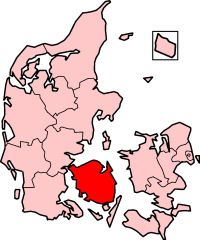
Map of real life Denmark with Fyn (Funen) in red from Wikipedia. Compare to The Southern Isles in the Frozen Fever map.
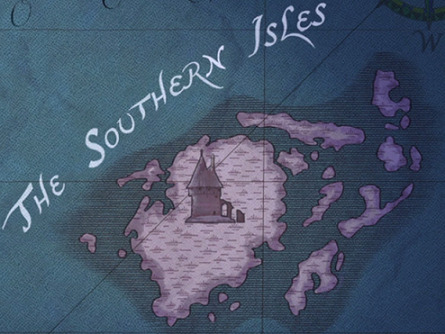
Hans Christian Andersen was born in Odense, capital city of Fyn.
In the bottom of the picture we see the Egeskov Castle in Fyn, whose tower reminds of the one we see in The Southern Isles in the Frozen Fever map. It looks like it the castle was still under construction in the Frozen Fever map (there are 13 princes, so they need a huge castle I guess!). It's quite hard to me to think all of this is just a coincidence.
But that is not the only Andersen reference. Hans having twelve older brothers reminds of Andersen's tale The Wild Swans. That tale is about a princess who has eleven older brothers. The princess is named Eliza, which reminds of Elsa and, not unlike her, she is taken for a witch and is almost killed for that reason.
It is also known that Disney planned to make a movie about the danish author's life which started developing in the 1940s (the same time period in which they started trying to adapt The Snow Queen).
That project was later abandoned. Nevertheless, Disney has adapted many of the danish author's tales.
So... could it be that when Frozen was finally made, the creators decided to pay homage to the danish author by making him a Disney Prince?
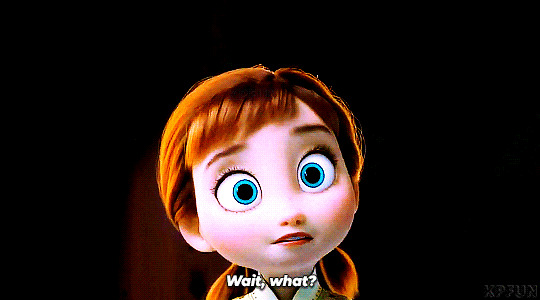
But wait... there is more.
Thanks to @thelittlehansy I knew Hans Christian Andersen himself appeared as an animated character in an episode of The Little Mermaid animated series, called "Metal Fish". So, if Disney already had an animated character design for H.C. Andersen, and Prince Hans was a tribute to the author, it would make sense they would look alike, wouldn't it? They just had to redesign the character to make him look young, regal and handsome. Let's have a look at how did the animated version of the danish author look like. I found the episode in swedish language on Youtube:
Part 1
Part 2


They look pretty similar to me. Ginger, big nose, large chin, with sideburns, wears a vest and, in the last scene, a tailcoat. Even the fringe is similar. If you still think all of this is a coincidence I have to disagree. As the Duke would say: The can be no doubt now.
Frozen Fandom: But that's not posible! Making the author a villain, not very important for the story, and the center of silly jokes?! That would be so disrespectful!
Well, I have spent two years trying to prove Frozen makes perfect sense withouth Hans being a bad guy. Santino Fontana said a lot of the scenes he recorded weren't finally included in the movie, so it's safe to think we miss a lot of information about the character. The movie is not badly written; it's too well written in fact: the plotholes are part of the plot.
Frozen Fandom: But Hans is the villain!! He plotted a whole plan to take over the kingdom, took advantage of Anna's vulnerability, leave her to die when she needed him the most and let's not forget almost decapitate Elsa after lying to her about her sister's death.
*Sighs in frustration* All you can accuse Hans of is being a jerk to a dying Anna, being in a very stressfull, life-or-death situation. But let's deny these accusations one by one.
Lying to Elsa about Anna's death: Technically, he wasn't lying, as Anna was dying because of ice magic and Hans though (because of Anna's own words!) Elsa willingly attacked her.
Almost decapitated Elsa: Already explained in the 11th post of this analysis.
Leave Anna to die: Hans was sure there was nothing he - or anyone else - could make to save Anna, and let's not forget the overall situation: people in the kingdom was in inminent risk of dying because of the winter (remember the Duke's words: if we don't "do something" ( = kill Elsa) soon, we all will freeze to death), and he was really shocked (see 9th post of this analysis) to know Elsa had attacked Anna.


Plotted a whole plan to take over the kingdom: The only evidence for this is his own "villain monologue", which I don't think we should take seriously for reasons already explained in the 9th and 12th posts. Telling Anna he wanted to marry her and then arrange "a little accident" of Elsa is more him being a jerk than confessing an evil scheme.
Took advantage of Anna's vulnerability: I have to disagree. I think he manipulated her a bit, but not all of the time. If we look at their "date" from an objective point of view, we realize that for the most part he was just being friendly. Dancing, taking a walk, eating something is not something particularly romantic.
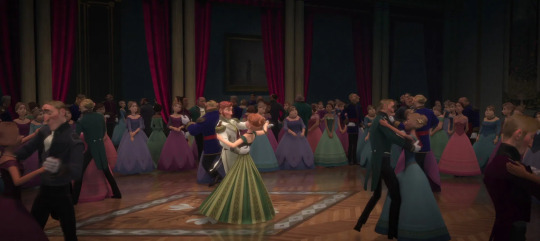
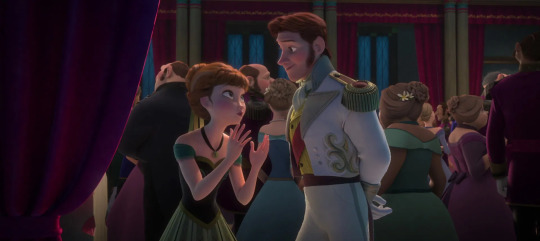
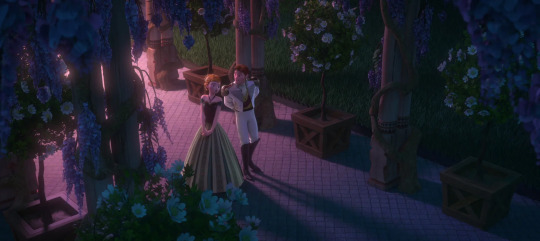
There were not ardent love expressions, he didn't even tell Anna he loved her. Can we really say he "seduced" her? The shoulder bump is romantic? It's more a friendly gesture, that is coded later in the saga as a "sibling thing".
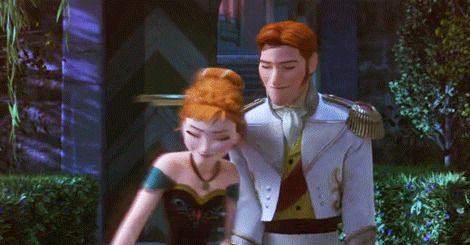
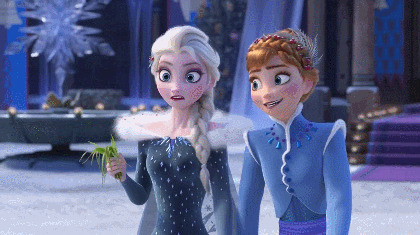
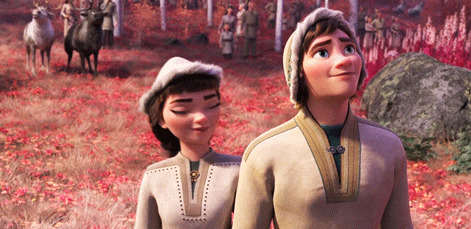
We are led to see the scene in a subjective way, through Anna's eyes. But if we rewacht the scene from an objective point of view, all we see is a friendly interaction.Things don't get really "romantic" until "Love is an Open Door". And let's not forget it's Anna who begins it and this is Hans' first reaction:

Then he basically plays along with her, and at the end of the song - when he proposes to her - that's where the manipulation begins.
Another reason against Hans being a villain would be his facial expressions. He only has facial expressions that could be labeled as villainous in a few scenes (already explained in previous posts). I find it very telling that when he sentences Elsa to death, creators chose to give us a close-up of his face expressing sadness - when a smirk would be more fitting, since this happens after the betrayal scene. It's like they wanted to tell the audience: "No, Hans is not happy to sentence Elsa to death; he is devastated".


Frozen Fandom: He`s faking to the Duke and the dignataries.
It could be, but it's unusual for Disney characters to fake to the audience. Gaston makes villanous expressions since he first appears, so the audience can easily identify him as a villain... but everyone in the town think he's a great guy!
And Mother Gothel... think how interesting would it be if the audience wasn't given the backstory at the beginning of Tangled. But still in that case, we would be able to analize her expressions and realize they are different from those of a worried parent.


Frozen Fandom: well, so who do you think is the villain then?
Simple: there is no real villain in Frozen. But there are two fake villains. This pair.
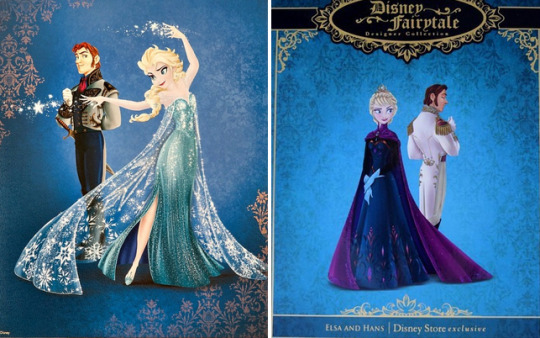
Before we continue we have to make the following question: who is this Elsa?
But was she the cursed princess to be saved, or the wicked witch to be vanquished? And what was his role in this story? (A particular understanding, by @fasadi)
Elsa: A witch in distress
While most of the audience identifies Elsa as a princess, making Frozen a "two princesses movie", this is only half truth. Anna is "the princess" and real protagonist in Frozen, while her sister shares some traits with other kind of classic Disney characters. Let's see: Elsa...
Is older than the princess
Has magical powers
Lives isolated
Has a position of power (she's the princess heir and becomes the Queen)
Wears heavy make up
Wears purple clothes (her coronation cape) and uses purple eyeshadow
Curses the princess and the kingdom
Her actions have a huge impact on the plot
Has a great (villain) song
Is (almost) killed by the prince
The 13th Disney princess shares these characteristics with these ladies:

From my point of view, the Evil Queen from Snow White is the one that has had the biggest influence in Elsa's look. I found the following description of the Evil Queen on the Disney fandom wiki very fitting for Elsa:
"From the outside, the Queen appears to be calm, regal, and sophisticated, but in reality, this collected and stately facade hides an extremely sadistic, hateful, cold and sinister person" (Elsa's facade is similar and also hides her real self) "The Queen is an icily beautiful woman with a serene, unfeeling face and a slender figure. She has pale skin, red lips, green eyes, and seemingly penciled-on eyebrows"


They both wear a long cape with a pendant. You can't really blame the Duke for thinking Elsa was "a wicked witch conspiring to destroy us all", can you? After all, this is a fairy tale. There has to be a witch!
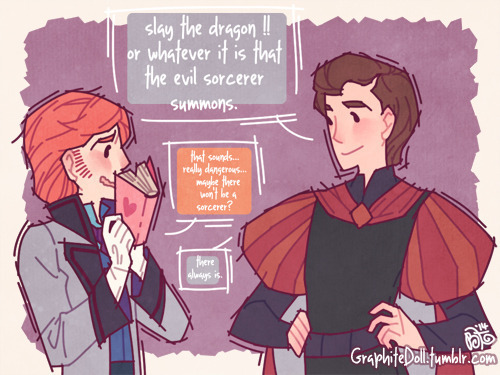
(Full comic here. A very fun comic showing Hans has all the traits of a classic Disney Prince. I'd love to see something similar with Elsa as a classic Disney Witch!).
At the end of the day, Elsa mortally attacked her sister and almost killed her whole kingdom because she had a massive anxiety attack. But even if she is, technically, a Disney witch and the villain of the movie (in the sense her actions are those of a villain) Elsa is not evil. Her thoughts, feelings and motivations are very different of those of a villain. She can't control her powers and feels unable to cope with the problems she has created, so her response is to run away.
This learned helplessness makes her another classic character: the damsel in distress. Elsa has to be saved from those who want to kill her to end the eternal winter and save the winter. She is first saved by Hans, who risked his own life entering the Ice Castle to save her from the Weselton guards and was able to stop her with a sentence that basically meant "I trust you" (whole analysis in the 7th post) and later saved by Anna. And, just like Hans saved Elsa from killing two men, Anna saved Hans from killing Elsa.
But, just because the audience "knows" Elsa they fail to identify her as the witch of this tale. They fail to understand that the Duke's reaction and prejudices against Elsa were, in fact, quite logic and understable. They fail to understand that (almost) everyone in Arendelle feared Elsa and wanted her dead, so the curse disappeared. The audience has all the information they need to realize Elsa meant no harm but... do the audience has all the information they need to understand Hans' character, and his sudden change at the end of the movie? I'm pretty sure we miss essential information.
Remember my interpretation of the gloves parallel in the analysis of the betrayal scene? One glove off = fake villain reveal. Now look at the Hans and Elsa dolls. "Hero and villain" series, and there are TWO sets of dolls. The first one: Elsa as the Snow Queen (hero), Hans in his fake villain reveal clothes (villain). The second one: they are in their coronation clothes, Elsa as a Queen who is secretly a witch (villain), Hans as the perfect Disney prince (hero). And the looks of complicity are very obvious.
And if Prince Hans' inspiration was the danish author himself, is there some real life woman behind Elsa?
The answer is Yes.
Hans Christian Andersen's inspiration for the Snow Queen was the most important of his (long) list of imposible loves.
Jenny Lind
Johanna Maria "Jenny" Lind (6 October 1820 – 2 November 1887) was a Swedish opera singer, often called the "Swedish Nightingale". One of the most highly regarded singers of the 19th century, she performed in soprano roles in opera in Sweden and across Europe, and undertook an extraordinarily popular concert tour of the United States beginning in 1850. She was a member of the Royal Swedish Academy of Music from 1840.

Yes, I know she doesn't look like Elsa. But still, she was the inspiration for the Snow Queen, and Elsa is inspired on the Snow Queen, so... she somehow "is" Elsa.
From Wikipedia:
She toured Denmark where, in 1843, Hans Christian Andersen met and fell in love with her. Although the two became good friends, she did not reciprocate his romantic feelings. She is believed to have inspired three of his fairy tales: "Beneath the Pillar", "The Angel" and "The Nightingale".[4] He wrote, "No book or personality whatever has exerted a more ennobling influence on me, as a poet, than Jenny Lind. For me she opened the sanctuary of art."[4] The biographer Carol Rosen believes that after Lind rejected Andersen as a suitor, he portrayed her as The Snow Queen with a heart of ice.
One of his stories, "The Nightingale", was written as an expression of his passion for Jenny Lind and became the inspiration for her nickname, the "Swedish Nightingale".[46] Andersen was often shy around women and had extreme difficulty in proposing to Lind. When Lind was boarding a train to go to an opera concert, Andersen gave Lind a letter of proposal. Her feelings towards him were not the same; she saw him as a brother, writing to him in 1844: "farewell ... God bless and protect my brother is the sincere wish of his affectionate sister, Jenny".[47] It is suggested that Andersen expressed his disappointment by portraying Lind as the eponymous anti-heroine of his Snow Queen.[48]
So, to sum up this very long post:
Hans and Elsa
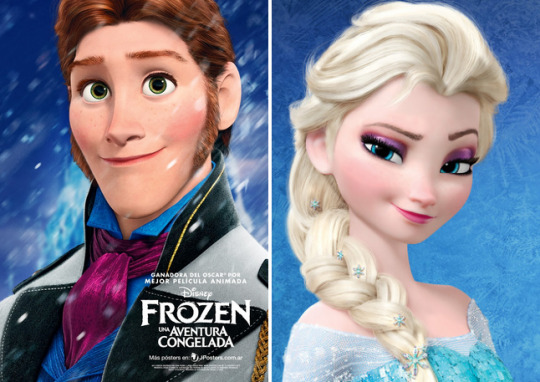
Who people think they are

Who they really are
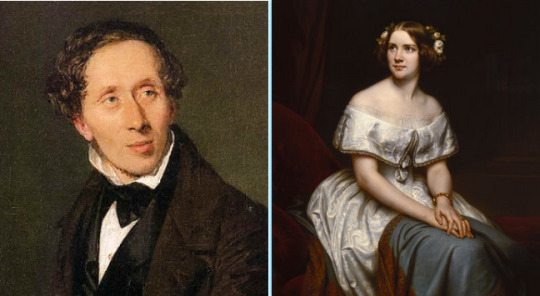
Conclusion
So... if I'm on the right track, and Disney created Prince Hans' character as a tribute to Hans Christian Andersen, wouldn't it make sense they planned to give him the happy ending he did not have in real life?
Time to analyze the Helsa hints...but that will be in a next post.
First post of these series here.
#frozen#disney#frozen analysis#hans analysis#hans#prince hans#hans of the southern isles#prince hans of the southern isles#hans frozen#let's redeem hans#my theories#who is this hans#disneyfilms#santino fontana#frozensource#elsa#queen elsa#elsa frozen#elsa disney#who is this elsa#elsa is a disney witch#frozen fever#the southern isles#fyn#fyn denmark#denmark#funen#funen denmark#egeskov castle#frozen disney
106 notes
·
View notes
Text
Odense
Odense is the third-largest city in Denmark and the main city on the island of Funen (Fyn). It’s a historically significant city with a rich cultural heritage, known for being the birthplace of the famed Danish author Hans Christian Andersen. Here’s a detailed look at Odense and its key features: History and Cultural HeritageOdense has a long history that dates back over a thousand years. It was…
View On WordPress
0 notes
Text
Egeskov Castle, Europe�s best preserved Renaissance water castle, Fyn Island, Denmark

0 notes
Text
Egeskov Castle, Europe’s best preserved Renaissance water castle, Fyn Island, Denmark

1 note
·
View note
Photo

Egeskov Castle, Europe’s best preserved Renaissance water castle, Fyn Island, Denmark
1 note
·
View note
Photo

Egeskov Castle, Europe’s best preserved Renaissance water castle, Fyn Island, Denmark
0 notes